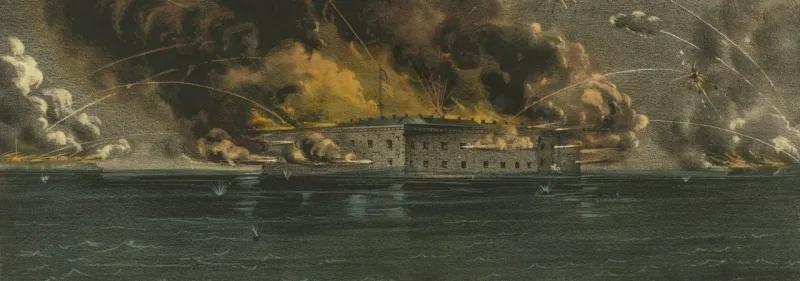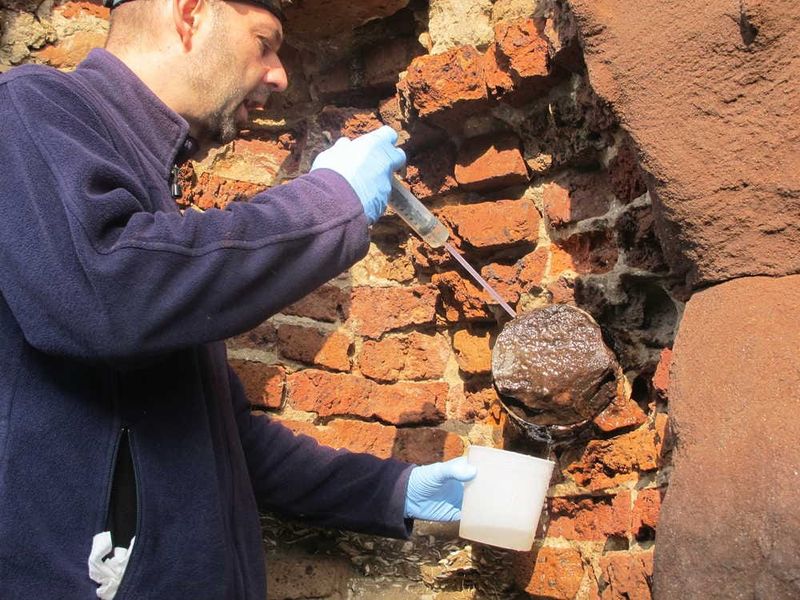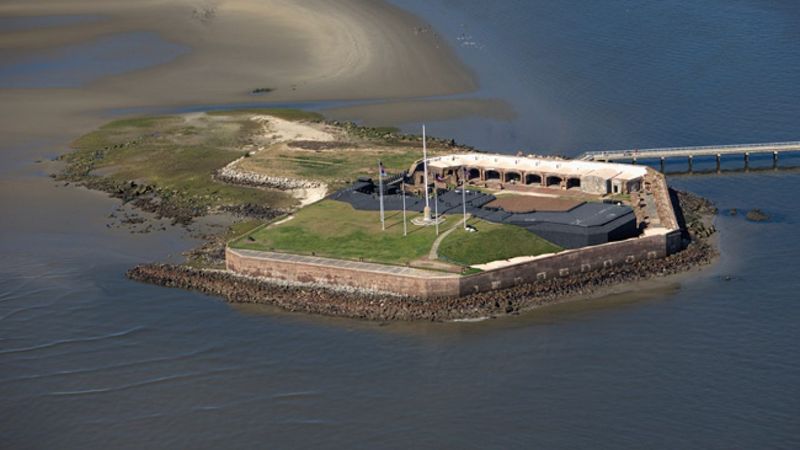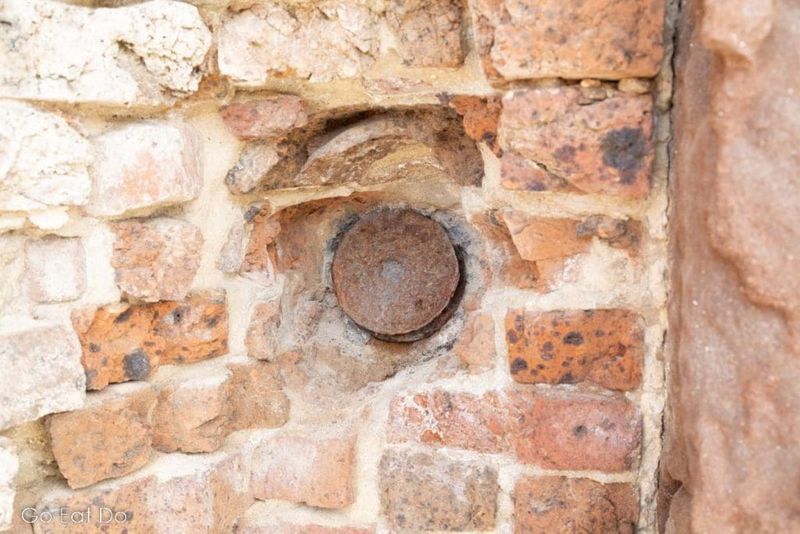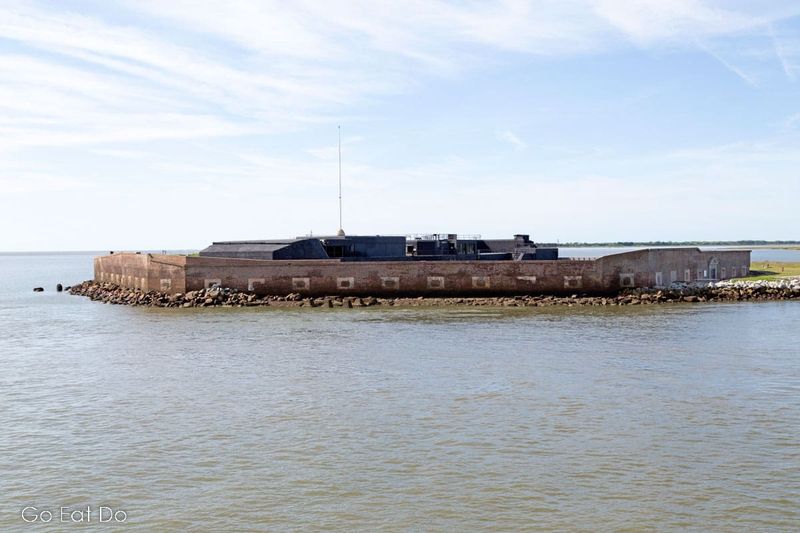Walking through Fort Sumter today, visitors can see the unmistakable tip of a Civil War artillery shell still wedged into the stone wall—a powerful, tangible reminder of the conflict that once raged there.
At this historic fortress in Charleston Harbor, recent preservation efforts have uncovered multiple shells that have remained embedded in the walls since the intense Union bombardments of the 1860s.
These rusted relics stand as silent witnesses to America’s most divisive war, revealing an extraordinary story of resilience, forgotten weaponry, and the ongoing work to preserve our nation’s past.
1. Some Shells Were Still Potentially Live
Buried within Fort Sumter’s weathered walls lurk Civil War explosives that never fulfilled their deadly purpose. Conservation teams approach these embedded relics with extreme caution, knowing that despite their age, some retain explosive potential.
Specialists must evaluate each projectile individually, often using specialized equipment to determine stability. The thought of a 160-year-old shell suddenly completing its mission sends chills through preservation teams.
Imagine the tension as experts delicately work around these slumbering giants of war, knowing one wrong move could trigger a blast that’s been waiting since Abraham Lincoln was president!
2. They Were Fired From Over a Mile Away
Union artillerymen on Morris Island achieved remarkable accuracy with their massive Parrott rifles. These imposing cannons hurled 30-pound iron projectiles across Charleston Harbor with deadly precision, demonstrating the frightening evolution of 19th-century weaponry.
The shells traveled in high arcs before crashing into Fort Sumter’s walls with devastating force. Many penetrated several feet into the masonry before stopping.
Standing at the original firing positions today, visitors marvel at how gunners could hit such a distant target without modern technology. The embedded shells serve as permanent proof of their extraordinary marksmanship across the waters.
3. The Siege Lasted an Unbelievable 22 Months
Fort Sumter endured America’s longest siege, withstanding a relentless storm of iron and fire. Union forces launched over 47,000 projectiles at the Confederate stronghold, transforming its proud walls into a crumbling shell.
Throughout 1863 and 1864, the bombardment continued day and night. Confederate soldiers huddled in makeshift bombproofs as their fortress disintegrated around them.
Each embedded shell visible today represents countless others that pounded the fort during those grueling 22 months. While most Civil War battles lasted hours or days, this marathon of destruction reshaped Fort Sumter forever, leaving physical evidence that has outlasted everyone who participated in the siege.
4. They’re Preserved Using Space-Age Science
Cutting-edge technology meets Civil War history in Fort Sumter’s conservation lab. Specialists employ subcritical water treatments—a method originally developed for modern industrial applications—to stabilize these ancient weapons.
The process gently removes corrosive salts that have been eating away at the iron for over a century. Without this intervention, the shells would eventually disintegrate completely.
Conservation scientists carefully control temperature and pressure to preserve these artifacts without triggering any remaining explosive material. It’s a delicate dance between preservation and safety, requiring expertise from fields as diverse as metallurgy, chemistry, and military history to maintain these accidental monuments.
5. The Fort Is Literally Built on a Sandbar
Fort Sumter’s foundation story adds another layer of wonder to its artillery-embedded walls. Engineers constructed this massive fortification atop an artificial island created by dumping over 70,000 tons of granite and other materials onto a natural sandbar.
When Union bombardment began, the shifting foundation complicated matters. As shells pounded the structure, sections began to sink unevenly into the sandy base.
This unexpected movement caused walls to tilt and crack, trapping incoming projectiles at odd angles. Today’s visitors notice how some embedded shells point upward while others angle downward—a direct result of the fort’s gradual settling into its sandy foundation during those violent years.
6. Removing the Shells Could Destroy the Fort
Structural engineers face a puzzling preservation challenge at Fort Sumter. Many artillery shells have become unexpected support columns within the damaged walls, their iron bodies fused with surrounding masonry over centuries.
Extraction attempts could trigger catastrophic collapses. The fort’s walls, already weakened by bombardment and erosion, rely on these accidental reinforcements.
Park officials decided on a counterintuitive approach: preserve the weapons in place rather than risk wall failure. Conservation now focuses on stabilizing both the shells and surrounding stonework as a single integrated system. What began as implements of destruction have transformed into crucial structural elements keeping history standing.
7. They’ve Become a Chilling Tourist Attraction
Visitors gather around Fort Sumter’s scarred walls, smartphones raised to capture something extraordinary. Dark metal tips protrude from weathered stone—physical connections to America’s bloodiest conflict.
Park rangers point out how some shells penetrated fully while others remain suspended, frozen mid-destruction. Children often reach out, wanting to touch these tangible links to history, before parents gently remind them of the “no touching” policy.
The embedded projectiles create a visceral experience unlike any museum display. Standing before weapons still lodged where they landed during battle offers a powerful moment of reflection. These silent artifacts transform abstract history lessons into concrete reality for thousands of tourists annually.
8. They’re Protected by the U.S. Army Corps of Engineers
Military expertise continues to safeguard Fort Sumter long after its battles ended. The U.S. Army Corps of Engineers partners with the National Park Service, bringing specialized knowledge to preserve this unique battlefield.
Engineers conduct regular structural assessments, monitoring how saltwater, weather, and time affect both the fort and its embedded ordnance. They’ve developed custom stabilization techniques specifically for these unusual conditions.
When Hurricane Hugo threatened the site in 1989, Corps specialists rushed to secure exposed shells before storm surge could dislodge them. This ongoing military protection creates an interesting historical continuity—the same organization that helped build the fort now works to ensure its embedded artillery remains safely preserved for future generations.
9. The Whole Discovery Was Almost Accidental
A routine maintenance inspection in the early 2000s unveiled Fort Sumter’s explosive secret. Conservation teams examining saltwater damage stumbled upon far more embedded shells than anyone had previously documented.
Workers originally focused on addressing erosion issues when they noticed unusual metallic patterns within the masonry. Careful investigation revealed dozens of projectiles hidden beneath surface materials, their presence unknown for generations.
Historical records mentioned the intense bombardment, but nobody realized how many shells remained physically trapped in the walls. This accidental rediscovery dramatically changed preservation priorities and created new interpretive opportunities. The fort’s most compelling artifacts had been hiding in plain sight, waiting for someone to recognize their significance.



